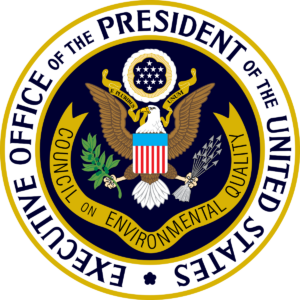
INGAA filed comments on March 25, 2015 on the Council on Environmental Quality’s (CEQ) “Revised Draft Guidance for Federal Departments and Agencies on Consideration of Greenhouse Gas Emissions and the Effects of Climate Change in NEPA Reviews.”
INGAA encouraged CEQ to withdraw the Revised Draft Guidance for the reasons identified below. Alternatively, if CEQ chooses to issue final guidance, it must ensure it adheres to current National Environmental Policy Act (NEPA), is consistent with the Administration’s policy to expedite certain infrastructure projects, is workable, affirms agency discretion over NEPA reviews, and will not give rise to independent causes of action.
• The Revised Draft Guidance contradicts NEPA law and regulations, U.S. Supreme Court decisions, and agency precedent by ignoring the requirement that there be a proximate causal connection and agency control over an action’s effects before those effects must be considered. CEQ also ignores the requirement that impacts be both reasonably foreseeable and significant before they are required to be analyzed.
• The nature of climate change is such that there is no causal connection—much less a reasonably foreseeable and proximate causal connection—between a single project’s GHG emissions and a climate change-related effect like sea-level rise.
• CEQ’s proposal to have GHG emissions serve as a proxy for climate change-related impacts in NEPA analyses has no basis in law or science. There is no “dose-response” relationship between particular GHG emissions and particular climate-related effects that would support such a proxy analysis.
• CEQ’s proposal to require analysis of “upstream” and “downstream” effects of a proposed action regardless of control and causation is both contrary to law and likely to lead to boundless inquiries.
• The Revised Draft Guidance runs counter to current agency interpretation of NEPA law. Some of these interpretations are currently before the U.S. Court of Appeals for the District of Columbia Circuit. If CEQ decides to finalize the guidance, it should at a minimum wait until the Court rules on these challenges.
• If CEQ intends to change the law, it must adhere to the Administrative Procedure Act. Alternatively, if finalized, the guidance must make clear that it is not binding and that agencies retain discretion to interpret and implement NEPA law. Moreover, it must be internally consistent, and should apply only to newly proposed projects after the guidance is finalized.
• The Revised Draft Guidance would contradict the Administration’s policy favoring the development of natural gas by making natural gas infrastructure more difficult to develop and bring to market.
• CEQ should clarify its statements on mitigation measures to ensure they are consistent with existing law and guidance.
• CEQ should not use a 25,000 ton reference point and the social cost of carbon. The reference point suggests a hard-and-fast demarcation, which is arbitrary. The social cost of carbon is too uncertain to be useful and was designed for the rulemaking process, not for environmental analysis of individual projects.
• There is no need for guidance to specifically address GHG emissions and climate change because the law is clear on agency obligations regarding the consideration of potential environmental impacts of proposed projects.
• If the Administration wishes to regulate GHG emissions and to address climate change, it should entrust that initiative to EPA, the subject matter expert.
• As such, the guidance either should be withdrawn or substantially revised before being finalized.







